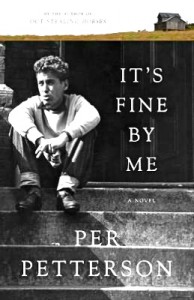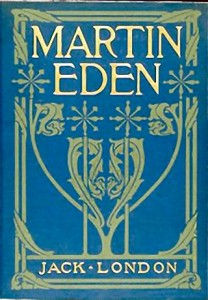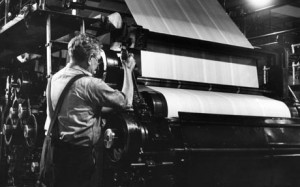“Something at school is not going the right way. What I do, I do well enough. What I hear, I remember and understand…but it’s as if the rest of my class has taken off on some journey they forgot to tell me about, as if there is a secret pact between teacher and students that does not include me. They know something I do not.”
 Firmly connected to the cold, often bleak landscapes they inhabit, Per Petterson’s characters are never frivolous, however impulsive and even violent their actions might be. Often shackled by circumstances over which they have little control, they respond in the only ways they can, sometimes self-destructively. The parents of the younger characters can sometimes offer little guidance, even by way of example, and growing up becomes a question of actions followed either by reward or, more likely, by harsh punishment. In the ironically entitled It’s Fine By Me, an early Petterson novel from 1992, Audun Sletten shares his life from his teen years to age twenty, always honest in his feelings, sometimes to his own detriment, and always sensitive to his personal standards of behavior, though he often imposes these standards by force.
Firmly connected to the cold, often bleak landscapes they inhabit, Per Petterson’s characters are never frivolous, however impulsive and even violent their actions might be. Often shackled by circumstances over which they have little control, they respond in the only ways they can, sometimes self-destructively. The parents of the younger characters can sometimes offer little guidance, even by way of example, and growing up becomes a question of actions followed either by reward or, more likely, by harsh punishment. In the ironically entitled It’s Fine By Me, an early Petterson novel from 1992, Audun Sletten shares his life from his teen years to age twenty, always honest in his feelings, sometimes to his own detriment, and always sensitive to his personal standards of behavior, though he often imposes these standards by force.
As the novel opens, thirteen-year-old Audun Sletten and his mother have just moved from the rural countryside to a poor area outside of Oslo, and from the first day of school, the reader sees that life is going to be difficult for Audun. He arrives late, soaking wet, wearing sunglasses which he refuses to remove – he says he has facial scars that he does not wish to reveal. After he is settled, the teacher offers him a chance to describe his former home to the students in the class, many of whom have never lived outside of Veitvet, and when Audun declines, the teacher continues to encourage him. Grabbing his schoolbag, Audun gets up, shouting, “I’ve always done my homework. I’ve always paid attention. You can see my school report, if you like, but you have no right to ask me questions about things that have nothing to do with school.” It is no surprise that a few weeks later, he confesses that “It’s as if the rest of the class has taken off on some journey they forgot to tell me about.”

Petterson’s depiction of Audun is lifelike, carefully crafted to allow Audun to maintain the personal respect he believes he deserves, while at the same time, so psychologically revealing of his actions that readers will immediately feel empathy for him and understand his self-destructive behavior. As the novel moves back and forth between Audun as a thirteen-year-old and Audun as a sixteen- or seventeen-year-old, his tendency to hit first and deal with the results later creates problems for him and for others around him. Still, he shows some empathy for others – adults who treat him kindly, and some other, younger children who do not threaten him. Though he punches out the bullying scoutmaster during the one time he joins an organized activity, he allows a young child in his former town to borrow his Cowboys and Indians books, and when that child later goes missing, he is the first to know where to find him and bring him home for help. He beats up a teenager who has bullied him, and then comes close to weeping in class when he reads aloud a story which moves him. Gradually, after many dramatic events, the reader sees Audun beginning to grow emotionally.
 Some of his growth is the result of his fast friendship with Arvid Jansen (who becomes the main character in Petterson’s I Curse the River of Time). Though Ardun must get up early to deliver newspapers before he goes to school, while Arvid leads a more fortunate life, they respect each other, and Arvid’s father becomes a kind of role model, the first person who guides him to read books that he finds appealing – especially the novel Martin Eden by Jack London. “There is something about this book, and about [Eden’s] struggle …that made me want to be a writer, and if I didn’t make it, I would be an unhappy person,” he says. Ardun’s own father, a violent drunkard who thinks nothing of beating his wife, smashing Ardun in the mouth, and hurling his younger brother against the wall, has been gone for five years during most of the novel, his actions revealed through flashbacks, but when he does show up to lurk about, his appearance terrifies Ardun. By contrast, his friend Arvid’s father is hurt coming home from work one night, and Arvid is almost inconsolable as he describes what happened. Ardun “pull[s] him close… and holds him tight…[Arvid] goes as stiff as a fence post and gasps for air, and only then do I realize that Arvid loves his father. It has never occurred to me.”
Some of his growth is the result of his fast friendship with Arvid Jansen (who becomes the main character in Petterson’s I Curse the River of Time). Though Ardun must get up early to deliver newspapers before he goes to school, while Arvid leads a more fortunate life, they respect each other, and Arvid’s father becomes a kind of role model, the first person who guides him to read books that he finds appealing – especially the novel Martin Eden by Jack London. “There is something about this book, and about [Eden’s] struggle …that made me want to be a writer, and if I didn’t make it, I would be an unhappy person,” he says. Ardun’s own father, a violent drunkard who thinks nothing of beating his wife, smashing Ardun in the mouth, and hurling his younger brother against the wall, has been gone for five years during most of the novel, his actions revealed through flashbacks, but when he does show up to lurk about, his appearance terrifies Ardun. By contrast, his friend Arvid’s father is hurt coming home from work one night, and Arvid is almost inconsolable as he describes what happened. Ardun “pull[s] him close… and holds him tight…[Arvid] goes as stiff as a fence post and gasps for air, and only then do I realize that Arvid loves his father. It has never occurred to me.”
When, at about twenty, Ardun is working at a printing company, he is still very quick to use his fists, but so, too, are many of the people he works with. A few older men take the time to give him some guidance. Always involved with alcohol, he is able to watch a man deteriorate slowly here, and he can actually see that this alcoholic man will, of course, lose his job – the man is unable to control himself, endangers others, and has no other future but to end up living under a bridge, homeless, friendless, and jobless.

Wonderful peripheral characters have their own stories – his younger brother Egil; Leif, an elderly farmer and his wife Signe, who provide him with a refuge as a child; his sister Kari, who goes off with a Jimmy Dean clone and then inspires Ardun to “rescue” her; and old Mr. Abrahamsen, a man on Ardun’s paper route, who takes the time to show he cares: “ ‘Ardun, I’ve watched you walking this round for several years, and I was wondering. How are you really doing?’ He blushes, the old man, and I blush, too. I don’t know how to answer a question like that, so I shrug and wait.” Eventually, Mr. Abrahamsen says, simply, that if Ardun needs something, he knows where Mr. Abrahamsen lives. Mr. Abrahamsen then moves on to catch his bus, as Ardun admits, “I really don’t get this man.”
Beautifully developed and filled with details which ring true, not just in terms of the time and setting, but in terms of psychological honesty, It’s Fine By Me feels autobiographical in its ability to convey real feelings by real people. The moving conclusion to this novel shows Ardun’s growth – oft en with the help of those who care about him – and readers who see themselves (at least in some aspect) within the character of Ardun will celebrate his coming of age, all the while knowing that Ardun is a work in progress and that he’ll never be able to take life or his own responses to threats for granted.
en with the help of those who care about him – and readers who see themselves (at least in some aspect) within the character of Ardun will celebrate his coming of age, all the while knowing that Ardun is a work in progress and that he’ll never be able to take life or his own responses to threats for granted.
Also by Per Petterson: I CURSE THE RIVER OF TIME, TO SIBERIA, I REFUSE, ASHES IN MY MOUTH, SAND IN MY SHOES, OUT STEALING HORSES
Photos, in order: The author’s photo is from http://www.dagbladet.no
Martin Eden by Jack London is shown here on http://duemacachi.blogspot.com
Always associated with Ardun’s father is this Paolo Soprano accordion, which Ardun eventually acquires: http://www.elderly.com
This printing press may resemble the one on which Ardun worked in the 1970s. The description of the drums, blankets, and paper rolls can be seen here.
ARC: Graywolf Press
